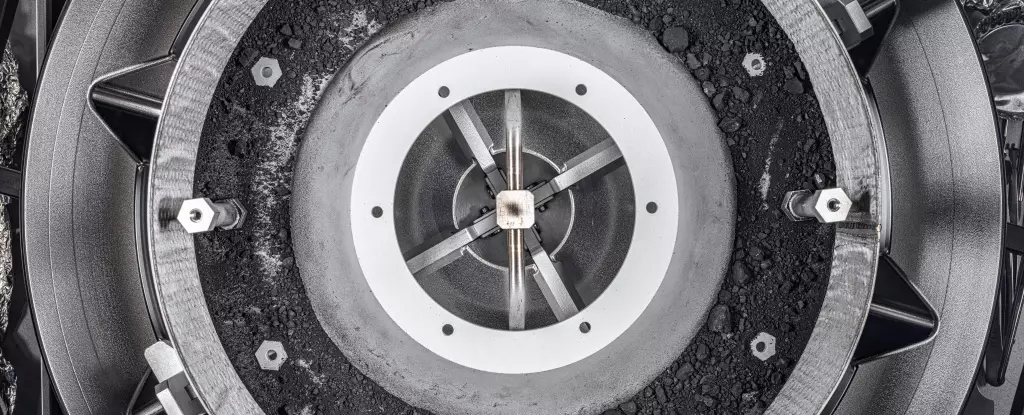After months of anticipation, NASA has finally unveiled high-resolution images of the contents of the Bennu asteroid sampler container. These images showcase black dust and rocks, ranging in size up to approximately 1 cm (0.4 inch). While they may appear ordinary at first glance, it is essential to remember that these materials have remained untouched for roughly 4.5 billion years. This treasure trove of geological artifacts could provide invaluable insights into the origins of our Solar System.
The reason behind the delay in releasing these images can be attributed to two stubborn fasteners securing the sampler lid. It was not until January 10 that these fasteners were finally loosened, allowing scientists to access the precious samples within. Subsequently, on January 19, NASA shared the much-anticipated images with the world, marking a significant milestone in space exploration.
During its flyby of Earth on September 24, the OSIRIS-REx successfully deposited 70 grams (2.48 ounces) of asteroid dust into the outer capsule. However, the main containment unit, referred to as the Touch-and-Go-Sample-Acquisition-Mechanism (TAGSAM) head, proved more challenging to open. Despite the team’s best efforts, it remained stubbornly sealed until January 10. With the access finally granted, scientists will now dedicate the upcoming weeks to measure the mass of the complete sample they can now examine.
With the TAGSAM head now open, the immediate focus for the scientific team shifts to removing the round metal collar visible in the released image. Following this, they will proceed to transfer the remaining sample into pie-wedge sample trays. These trays will subsequently be meticulously photographed, with the final sample being weighed, packed, and stored at NASA’s Johnson Space Center in Houston. The eventual release of a comprehensive catalog of Bennu samples later this year will allow scientists worldwide to request access for research or display purposes. It is noteworthy that 75 percent of the sample will be reserved for future analysis, ensuring an enduring resource for the scientific community.
Astrochemist Dante Lauretta, affiliated with the University of Arizona Lunar and Planetary Laboratory, lauds the momentous achievement of finally accessing the TAGSAM head and unraveling the secrets of Bennu. In his statement on January 10, Lauretta expresses a deep sense of pride in the team’s unwavering dedication and ingenuity. He emphasizes the significance of the OSIRIS-REx mission as a means to advance our understanding of the cosmos and eagerly looks forward to the subsequent chapter of sharing these precious samples with the global scientific community, fueling the ongoing journey of discovery.
Now named OSIRIS-APEX, the mission is not yet complete. The spacecraft is currently en route to its next destination, Apophis, a potentially hazardous asteroid. The rendezvous with Apophis is scheduled for 2029, promising further remarkable insights and pushing the boundaries of human knowledge in the realm of space exploration.


Leave a Reply